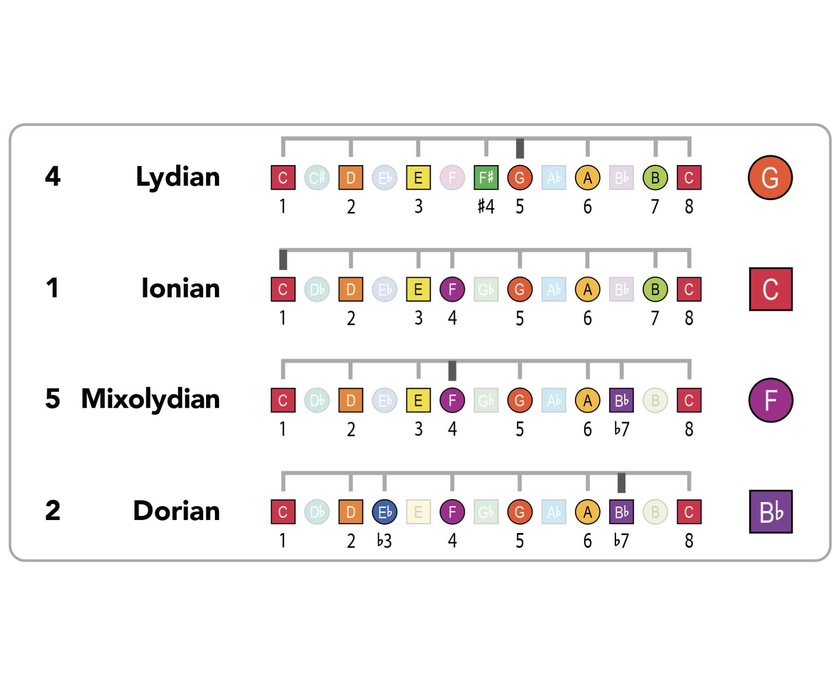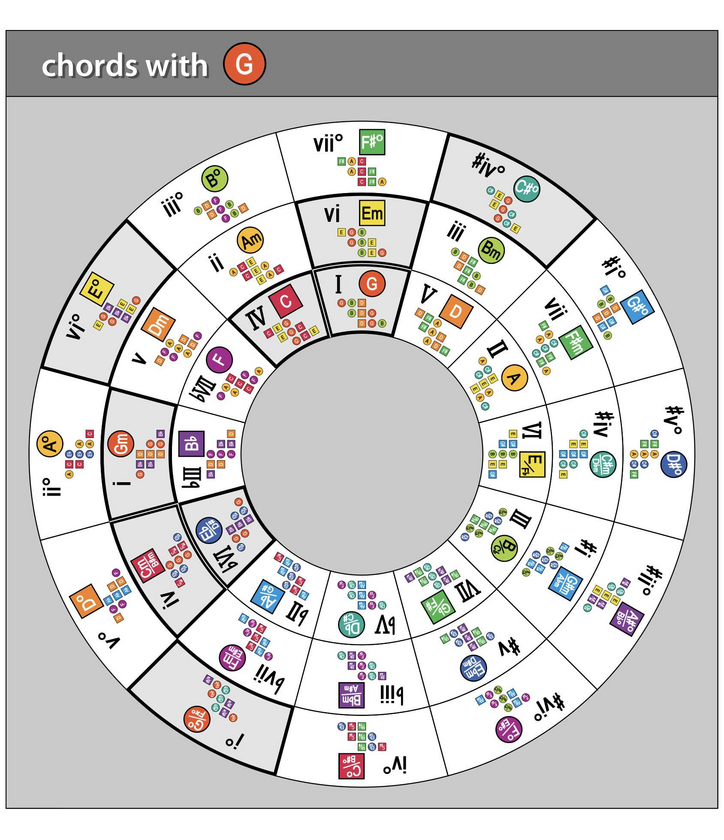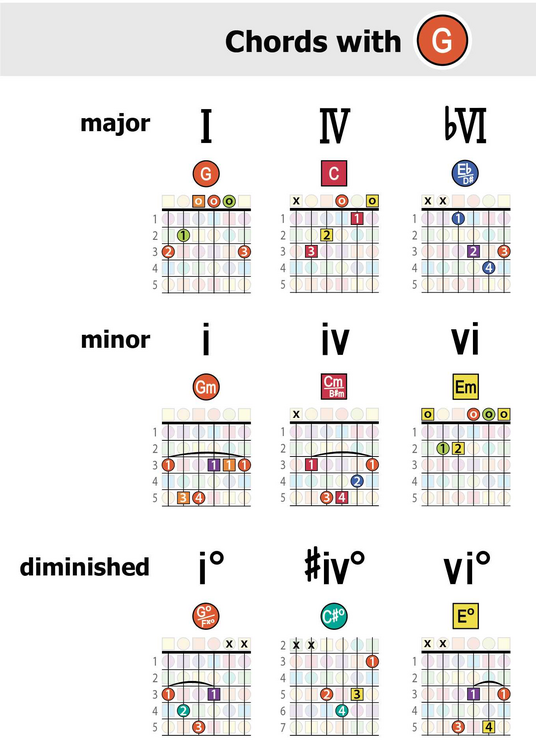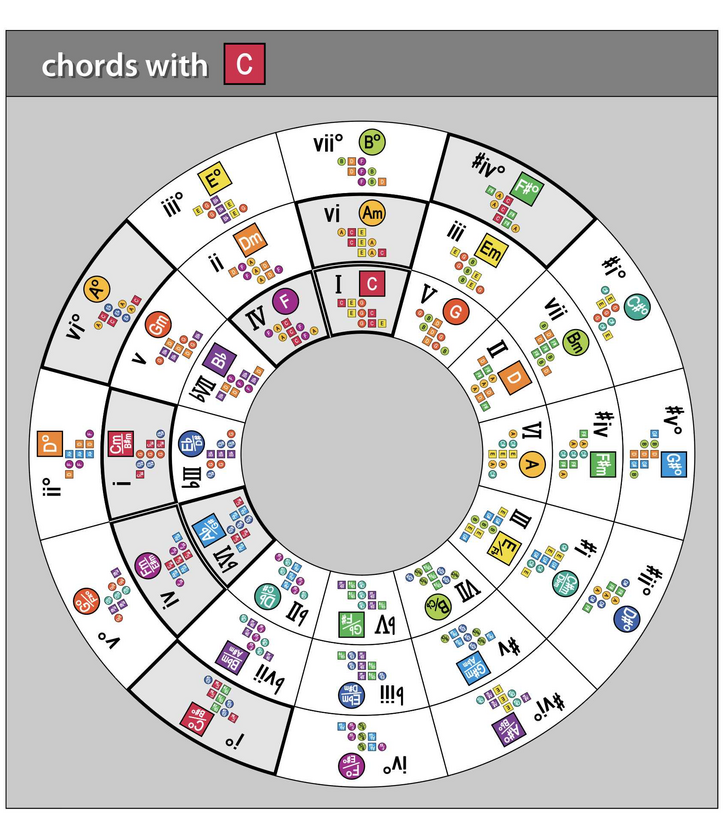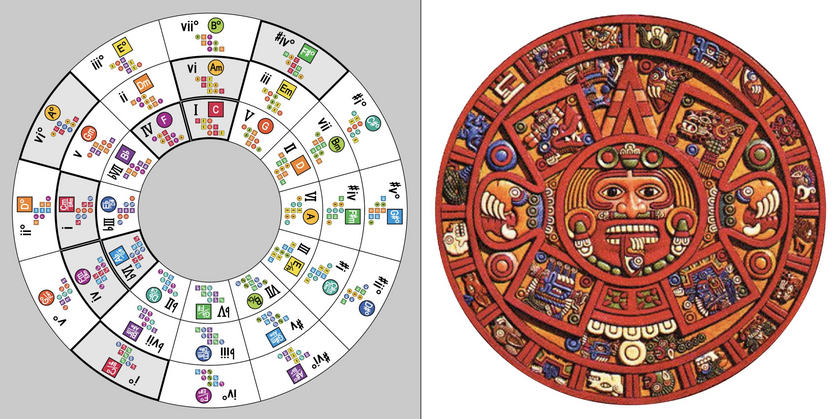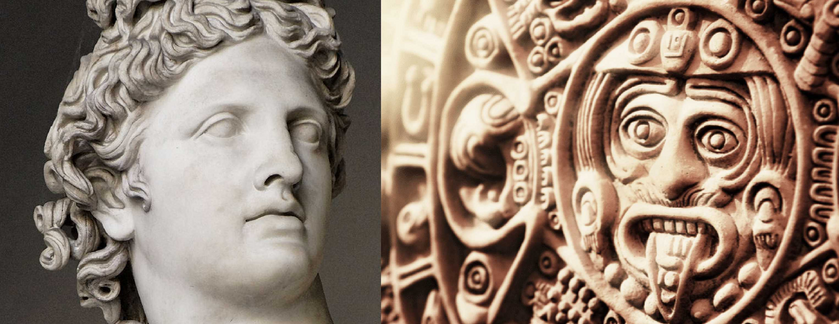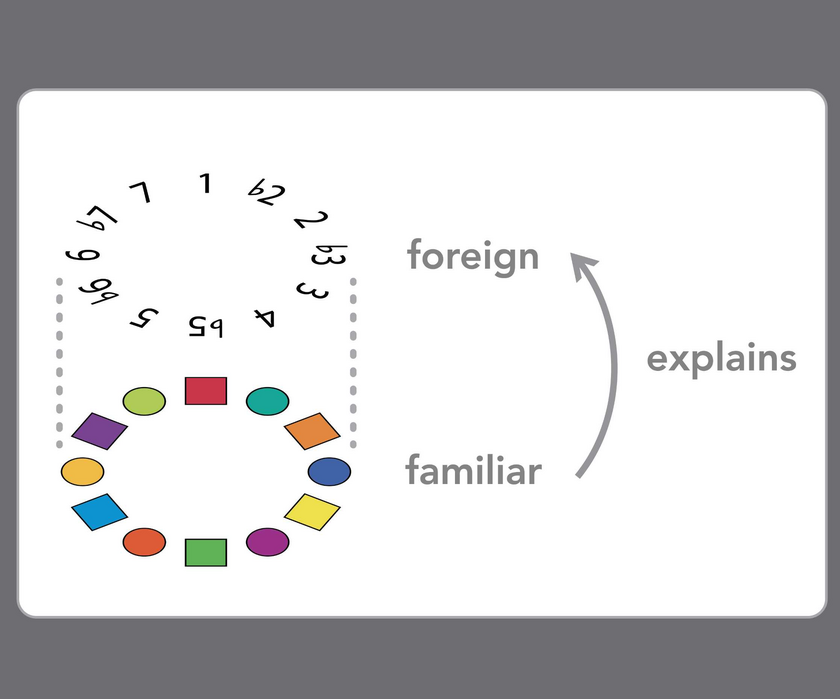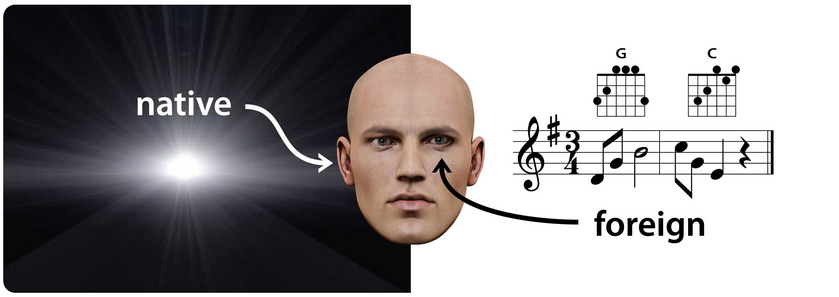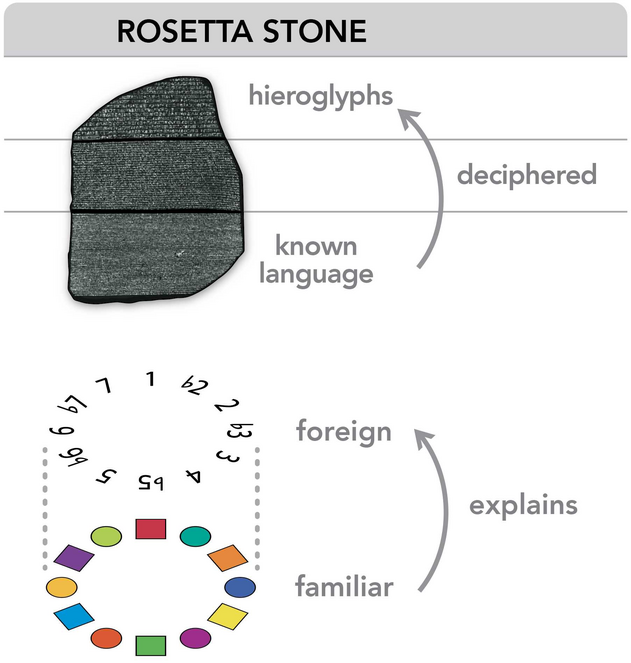In music, modes are a beautiful thing. Because they're just permutations of a major scale. Or, in the case of PARALLEL modes, they are permutations of different scales -- but all starting on the same note.
To explain, here are the 7 parallel modes in C ... meaning the C note is the first note of each pattern:
 Here's what this all means:
Here's what this all means:
- The C Lydian mode at the top is really just a permutation of the G major scale -- as indicated by the G note at the right and also the dark line above G in the pattern.
- On the left, the number 4 shows that C is scale degree 4 in the underlying pattern (in this example, the G major scale).
- So, instead, if you started this pattern on G (at the dark line), then C would be scale degree 4. As a result, C Lydian is the same pattern as G major (a.k.a. G Ionian), but starting on the fourth scale degree of that underlying pattern.
- And since it starts on C (instead of G), it has a different kind of sound we call "Lydian."
- Following this same logic, the next pattern -- C Ionian -- is identical to the C major scale, as shown by the C note on the right and the 1 on the left.
- Next is C Mixolydian, which starts on scale degree 5 of the F major scale.
- And so on.
This table is handy because it shows how each C parallel mode is derived. It's all just patterns.
And these patterns apply to any instrument. For example, here are the same 7 modes as they appear on the piano keyboard. Try playing each to put theory into practice.
- Specifically, play each C parallel mode followed by its source scale a few times, back and forth.
- For example, C Lydian followed by G major, then C Lydian again -- repeating the process to hear how the patterns relate.
- Then do C Ionian followed by ... well, C Ionian ... that mode is simple.
- Then C Mixolydian, followed by F major, followed by C Mixolydian, etc.

Going through this exercise really helps to solidify the connections between patterns. It trains your eyes, fingers, and mind to recognize the underlying theory at play.
And the same is true on the guitar -- as shown here, with these 7 modes on the fretboard....
